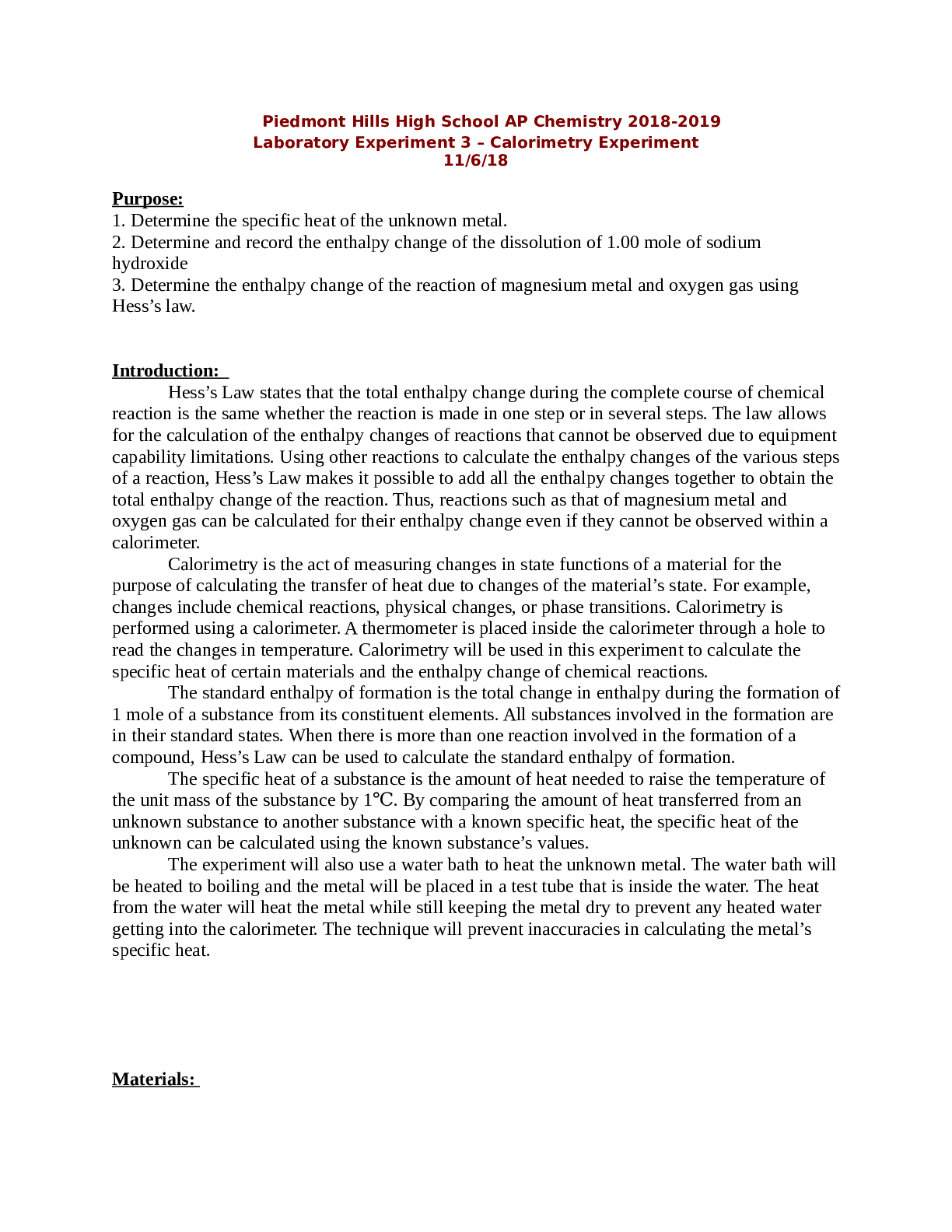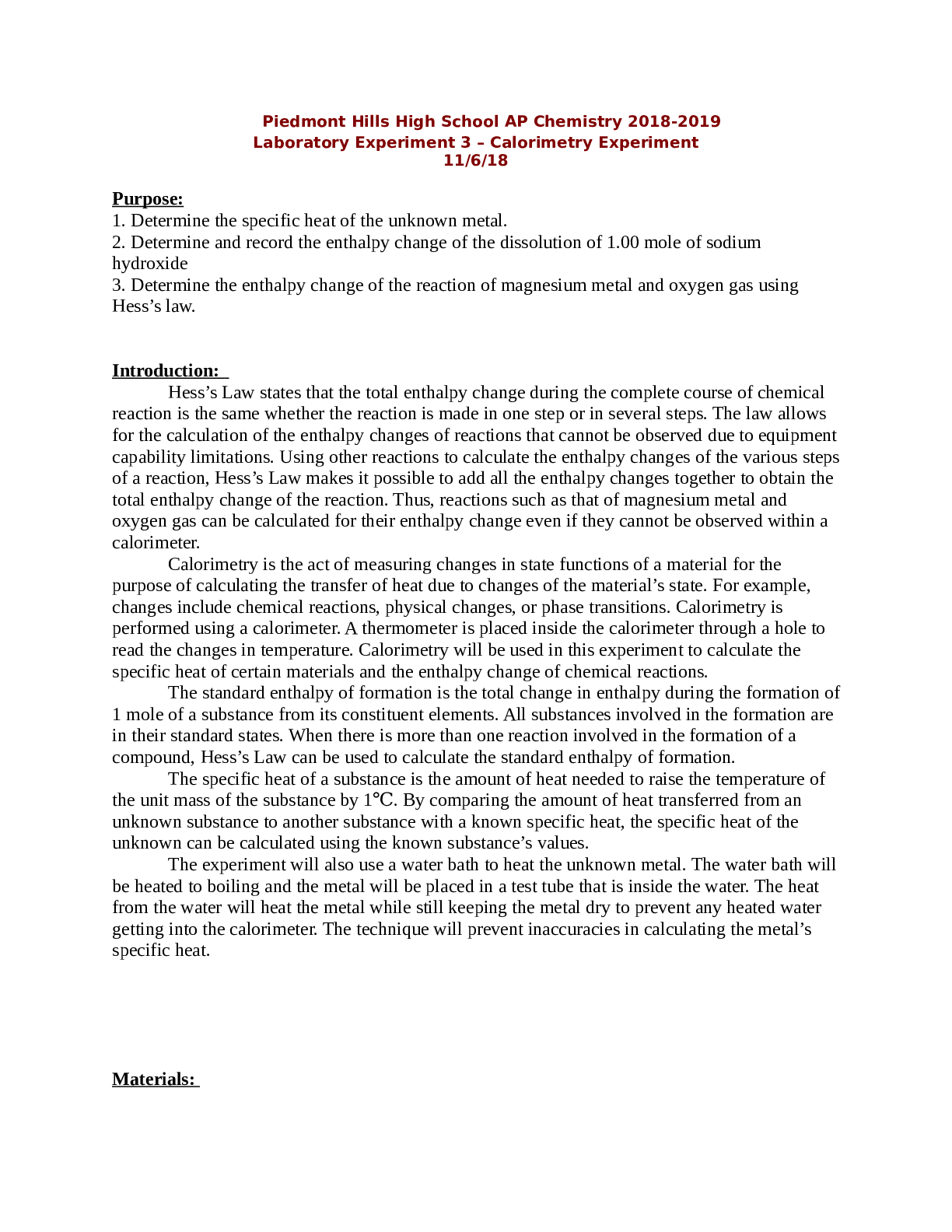Laboratory Experiment 3 – Calorimetry Experiment
Course
English
Subject
Chemistry
Category
Report
Pages
13
Uploaded By
ATIPROS
Preview 4 out of 13 Pages


Download all 13 pages for $ 7.50
Reviews (0)
$7.50
